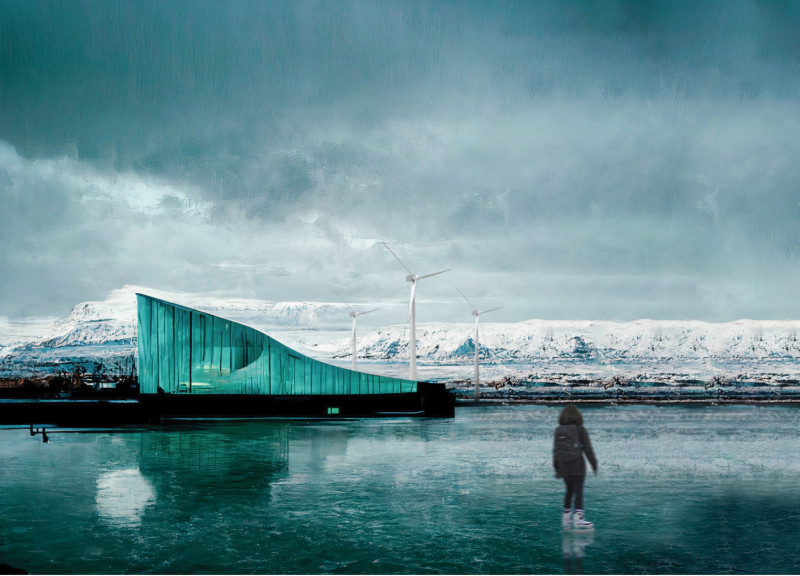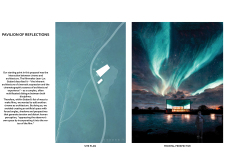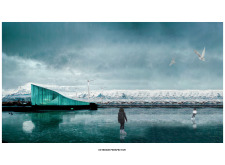5 key facts about this project
The Pavilion of Reflections features a design that illustrates the connection between cinema and architecture. Located in a landscape that showcases natural beauty, the pavilion serves as a space for contemplation. The overall concept is focused on minimizing distractions, allowing visitors to immerse themselves in their surroundings and the experience of film.
Conceptual Framework
The design takes inspiration from the insights of filmmaker Jean-Luc Godard, who explored the relationship between cinema and architecture. The pavilion seeks to create a minimalist space that incorporates only the essential elements for reflection. This approach emphasizes a shift from solid structures to more transparent forms, enhancing the sensory experience of those who enter.
Spatial Configuration
The layout carefully leads visitors through a range of experiences, moving from open areas to more intimate spaces below ground. This arrangement fosters exploration, allowing occupants to engage with the different spatial qualities. A slightly elevated form gives visitors clear views of the surrounding landscape, helping to create a strong bond between the building and its environment.
Integration with Landscape
A key feature of the Pavilion of Reflections is its integration into the landscape. The building complement the natural beauty of its setting, reinforcing a connection to the site. The elevated design not only provides vistas but also supports a dialogue between the structure and the surroundings, adding depth to the visitor experience.
Natural light plays a significant role in the pavilion’s design. Its interaction with the architectural form creates an inviting atmosphere, encouraging moments of reflection and personal engagement as sunlight moves across the interior spaces.






















































